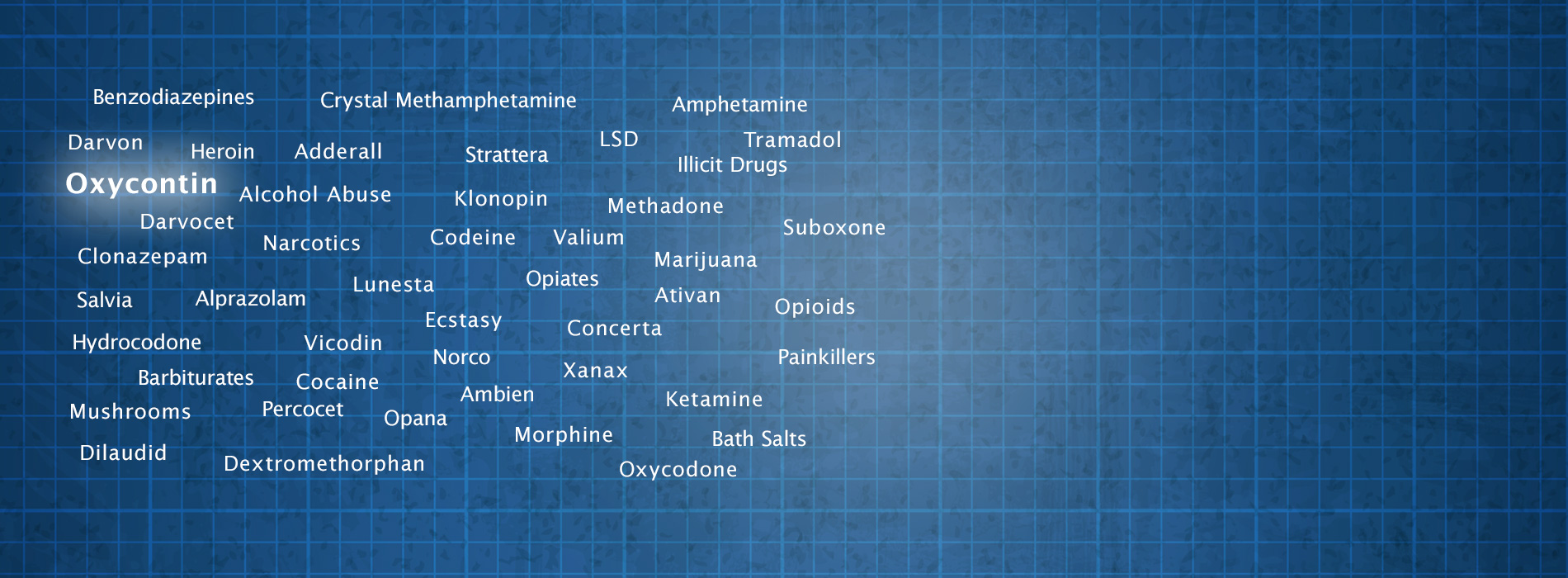Oxycontin
OxyContin (OC or Oxy) is the brand name for oxycodone, a synthetic painkiller of the opiate family. This drug is often prescribed to people who are suffering from moderate to severe pain from chronic and debilitating health conditions. Around 9 percent of adults in America have or will misuse some opioid narcotic, such as OxyContin. A recent report from the U.S. Department of Justice found that over 13 million people in this country use oxycodone for recreational purposes. This addiction is a current problem that only increases.As a Schedule II narcotic, OxyContin is available only as a prescription from a physician. However, some of this drug is diverted and sold on the street illegally. This drug elevates dopamine in the brain, which is a neurotransmitter associated with pleasure. Known also as “Hillbilly Heroin,” OxyContin is often abused when the pill is crushed into a fine powder and snorted. Many people who are addicted dissolve the powder in water before IV injection. This method drastically increases the risk of OC overdose. Because of this, the manufacturer of OxyContin reformulated the drug so it cannot be crushed.
Most people who abuse OxyContin also abuse alcohol and other drugs. To potentiate the high, many abusers will take benzodiazepines, which can lead to respiratory depression or even death. Many individuals attempt to subdue the effects of stimulants by taking Oxy, which can lead to a heart attack or stroke.
Dual Diagnosis
When addiction occurs along with a co-existing mental condition, it is called a dual diagnosis. The most common disorders to occur with addiction are:
- Depression
- Anxiety disorders
- Bipolar disorder
- Schizophrenia
- Alcoholism
Causes of Addiction
Researchers are not able to prove the exact cause of addiction. However, they believe that numerous factors combined work together to lead to addiction. Causes likely include:
- Genetics – Certain people who have a family member that struggles with addiction will develop addiction, as well.
- Brain chemistry – Many people are born with a defect in the pleasure center of the brain, which leads to decreased dopamine levels. They attempt to correct the defect by using narcotic analgesics.
- Psychological – People who have underdiagnosed or untreated mental conditions often suffer from addiction, as they attempt to self-medicate with a substance like OxyContin.
- Environmental – Those who are reared in an environment where pain medication is used often handle negative emotions and stress by abusing a substance.
Signs and Symptoms of OxyContin Addiction
There are numerous signs and symptoms of addiction that alert friends and family members to this problem. The common indicators of Oxy abuse are:
- Anxiety
- Mood swings
- Depression
- Irritability
- Lying to others
- Hiding use of the drug
- Doctor shopping to obtain many prescriptions
- Forging prescriptions
- Nodding off or out
- Dizziness
- Neglecting responsibilities
- Strained relationships
- Stealing or borrowing money
- Worsening of emotional health
OxyContin Treatment
OxyContin rehabilitation (rehab) treatment occurs in three stages: detoxification (detox), counseling/therapy, and recovery/after care. The first stage, detox, is when medication is used to help rid your body of the drug. This eliminates severe withdrawal symptoms, as you are gradually tapered off the drug. The next stage is counseling and therapy. This is done to help you start a new life and to learn ways to avoid returning to a life of addiction. The final stage is sustained recovery. Through support groups and halfway houses, you will find assistance to live a happy drug-free life.

